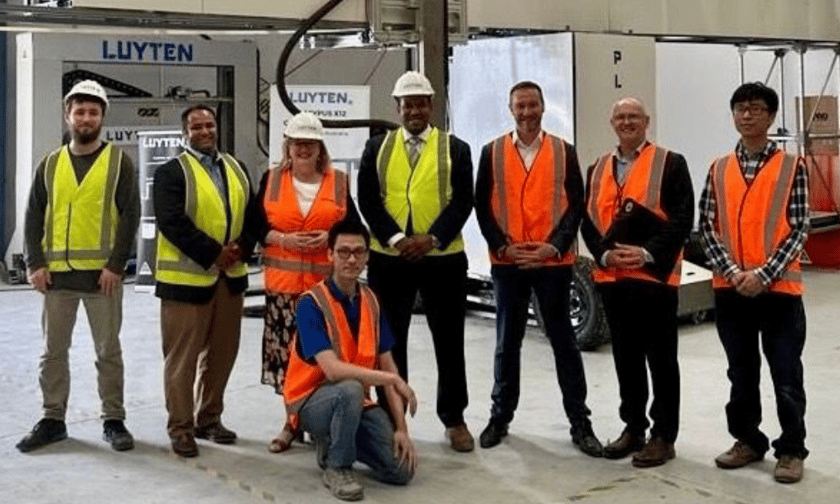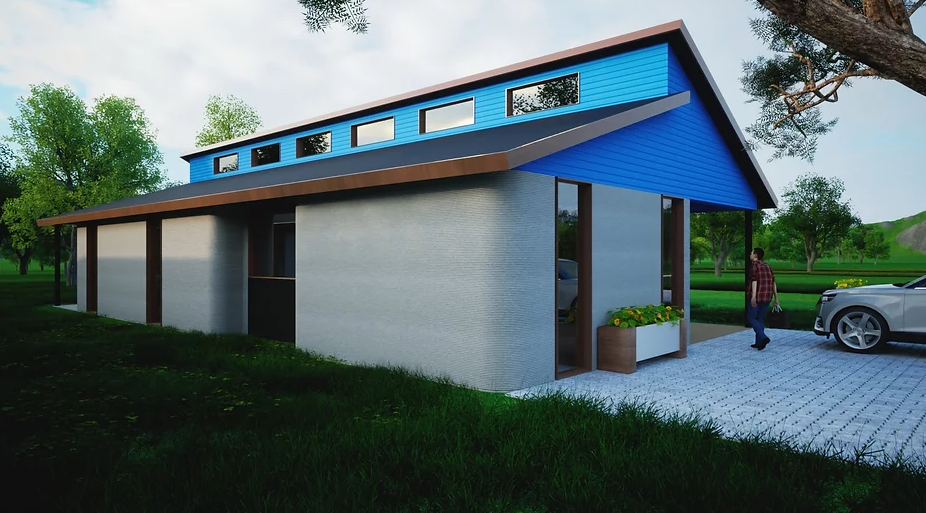

Australian 3D printing company Luyten 3D has completed a significant achievement by constructing the first 3D-printed two-storey building in the southern hemisphere.
The two-storey granny flat was printed in just 32 hours at Luyten 3D’s global headquarters in Melbourne, using their advanced Platypus X12 mobile 3D printer (pictured above).

Luyten 3D, known for its efforts in 3D construction technology, used the Platypus X12 printer, the largest mobile AI-powered 3D printer globally, to print the building. The Platypus X12 can expand to six meters in height and 12 meters in length, and it operates using a self-propelled crane, making it highly adaptable for different construction sites.
“We are extremely proud to become the first ever 3D printing company in the building and construction sector to deliver on such a monumental achievement,” said Ahmed Mahil, founder, CEO and global president of Luyten 3D.
The two-storey granny flat, comprising two bedrooms, a kitchen, bathroom, and living area, was printed in a single continuous session by two staff members over two and a half days. This construction method significantly reduces build time and costs, compared to traditional building methods.
“Through our telescopically transformative Platypus X12 printer, we have made it possible for this printing to happen seamlessly in one printing session without the need for the involvement of any other heavy machinery,” Mahil said.
Luyten 3D used their proprietary concrete mix, Ultimatecrete Ultraeco, to print the building. This mix uses 20% less cement than the original eco-friendly Ultimatecrete, enhancing sustainability while maintaining high performance.
Mahil emphasised the potential of 3D printing to address housing affordability and construction efficiency.
“3D printing significantly reduces build time and cuts costs for the creation of the structural framework,” he said. “Rather than laying bricks and building walls, 3D printing simply prints the structure so that trades can then install the final elements.”
The project demonstrates the versatility and potential of 3D printing technology for a wide range of construction applications, especially in remote or challenging locations. The Platypus X12 can create durable, weather-resistant structures quickly and efficiently.
Luyten’s 3D printing technology enables significant reductions in waste, production time, and labour costs, the company said.
“Traditional building methods are proving too costly for an industry that has operated on fixed cost contracts and archaic building practices,” Mahil said. “3D printing isn’t just for basic structures. As we have shown, 3D printing is capable of delivering a broad range of properties for different and challenging locations.”
Get the hottest and freshest mortgage news delivered right into your inbox. Subscribe now to our FREE daily newsletter.
